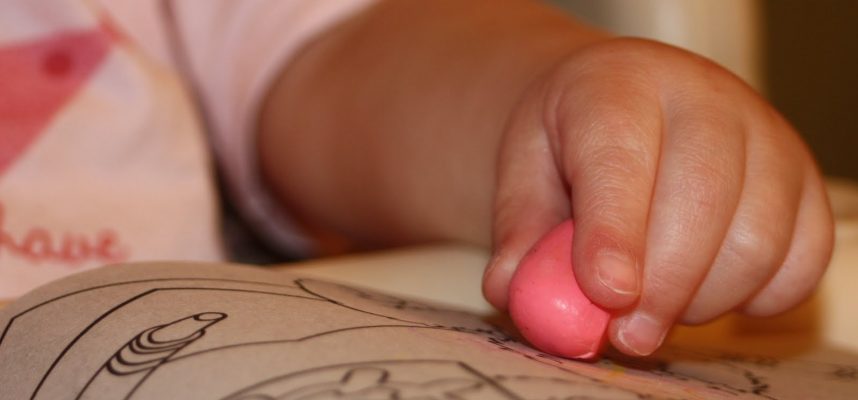
Is your baby grasping the pincer grasp?
As a new mom, it is overwhelming to see your baby cross new milestones of growth and development! Have you heard of the pincer grasp? Your baby may be opening his fists and grasping his toys better or even picking his first bite. Are you excited already about one of your baby’s first signs of independence? Read on to know more!
What Is The Meaning Of A Pincer Grasp?
A pincer grasp (1) is a kind of finger hold that your baby will start developing between the age of nine and twelve months. In the pincer grasp, your baby will use the pointer finger and the thumb to squeeze together an object before grasping and picking it up.
Reaching The Pincer Grasp Age
Your baby already has grasping reflexes from the time of birth. Your baby will react to any sudden or loud noise by grasping his fists. These are the first grasping reflexes of your baby.
Aside from tempting finger foods, she’ll enjoy touching, exploring, and manipulating all kinds of toys and household objects, such as:
- Activity boards or busy boxes with lots of buttons to poke, switches to flip, and dials to turn; these toys also teach the important thinking skill of cause-and-effect.
- Blocks of all sizes, shapes, and textures; she can stack them, knock them down, and clap them together.
- Balls, also of differing sizes and textures — try some that are big (but lightweight) enough for her to push, others that are small and supple enough for her to squeeze.
- Kitchen gear is always a hit; give her measuring spoons and cups, wooden spoons, and plastic bowls.
- Nesting toys, such as cups or boxes in graduated sizes, are also lots of fun for babies.
What comes next
Once your baby perfects grasping, throwing isn’t far behind, so watch out — many babies enjoy hurling their toys. By the time he’s a year old, he’ll enjoy playing ball, stacking towers, and banging things together.
By the time he’s 18 months, his artistic side will emerge, and he’ll be fascinated with crayons and how to use them to draw and write. At 3 years old, he’ll be coordinated enough to attempt to jot down letters, and maybe even pen his name.
Your role
To stimulate your baby’s grasping reflex, try putting a toy or colorful object slightly out of her reach and encouraging her to grab it. (Don’t frustrate her by putting it so far away that she can’t get it, though.) Give her lots of objects she can easily grasp, such as soft blocks, plastic rings, and board books.
Later, when she’s working on her pincer grasp, encourage her to pick up soft finger foods, such as peas and cooked carrots — perfectly good manners until she masters that spoon. To guard against choking, it’s a good idea to keep hard foods (like nuts or raw carrots) away from her.
By the time she’s 18 months old, she’ll discover she can place many objects she grasps into other things. You can help her develop this skill by giving her objects to put in empty boxes, plastic cylinders, or other containers.
When to be concerned
If your child doesn’t seem interested in a toy or another object you move in front of him by 2 to 3 months, can’t grasp an object at 3 months, or doesn’t attempt to touch or pick up an object by 3 to 4 months, discuss your concerns with his doctor. Premature babies may reach this and other milestones later than their peers — check with your child’s doctor about a reasonable time frame.

